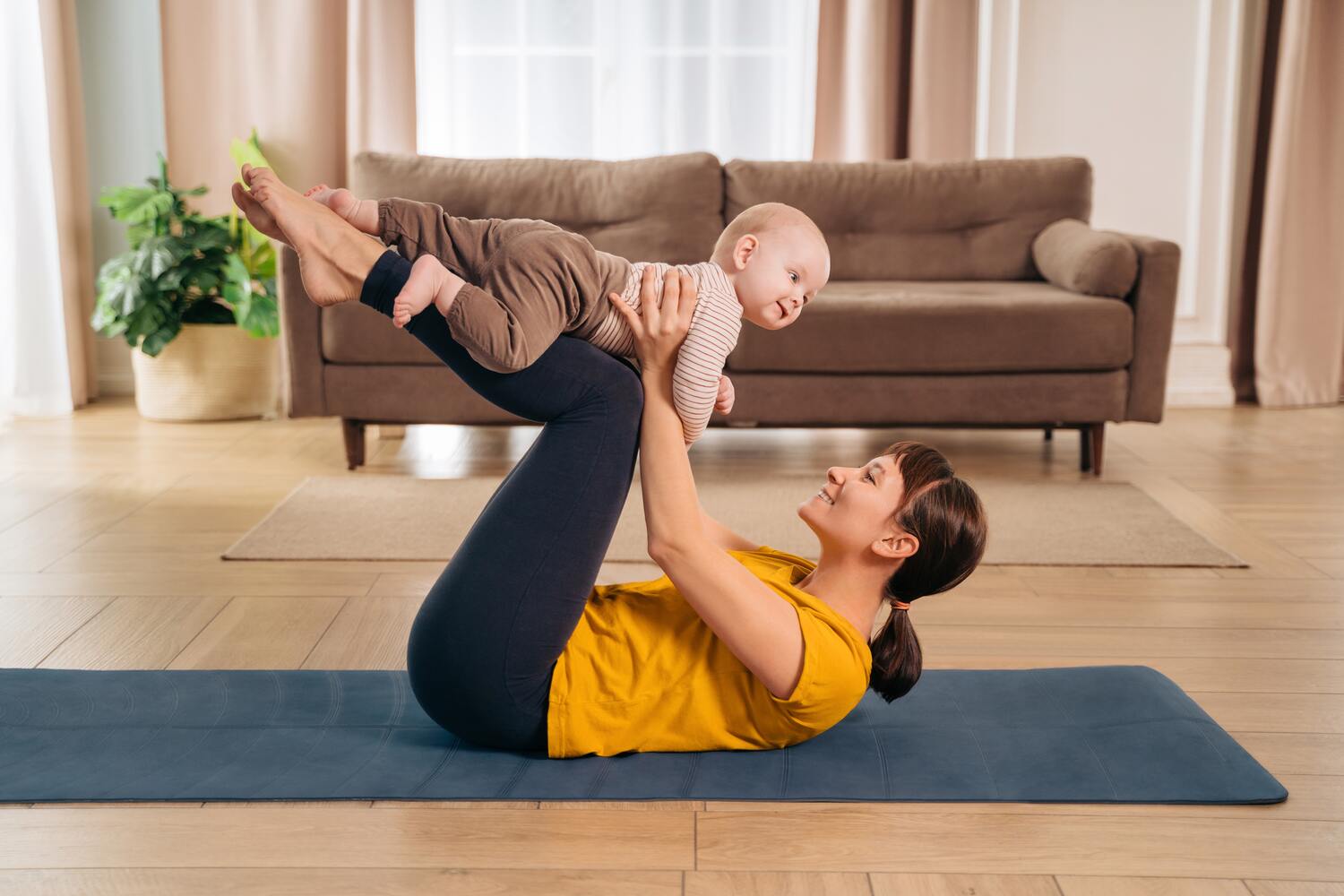
Postnatal Yoga is a gentle restorative style of yoga that heals the body of a woman after pregnancy and childbirth, and nourishes and supports her emotionally. The holistic health needs of women who have recently delivered are different from that of the general population, which is why a class tailored to postnatal recovery is more suitable than a general yoga class at this time.
Postnatal yoga can help restore normal body functioning after delivery. Hence, enrolling in a personalized and well-tailored yoga class suggested by your healthcare provider can enhance your overall health and boost recovery.
In This Article
- Why is Postnatal Yoga Important?
- Benefits of Postnatal Yoga
- Are There Any Disadvantages to Joining Postnatal Yoga Classes?
- How Soon Can You Start Yoga After Delivery?
- Top Postnatal Yoga Poses For New Mothers
- Precautions to Take When Joining Postpartum Yoga Classes
- When to Consult a Doctor For Postpartum Yoga
- FAQ’s
Why is Postnatal Yoga Important?
Postnatal yoga can be a great help for mothers recovering from childbirth. It helps in healing and tissue repair. There are several reasons to incorporate yoga into your workout routine. It relaxes your body and mind and makes you feel fresh throughout the day, keeping stress and anxiety at bay.
Committing 35 to 40 minutes a day to yoga can unlock endless benefits to promote better health (1). It’s better to enrol in yoga classes or workshops if you want personalized training. Here are some ways on how yoga classes can help you.
Signing up for a postnatal class gives you the ability to exercise under the guidance of a qualified teacher. You get the opportunity to exercise in a structured way and don’t have to worry whether you are doing enough to make a difference.
Left to oneself most people like to stick with what they know or like, which may be different from what they need. A teacher is there to support and motivate you along the way. Exercising along with others in a group you feel more enthusiastic and there is a feeling of camaraderie.
Benefits of Postnatal Yoga
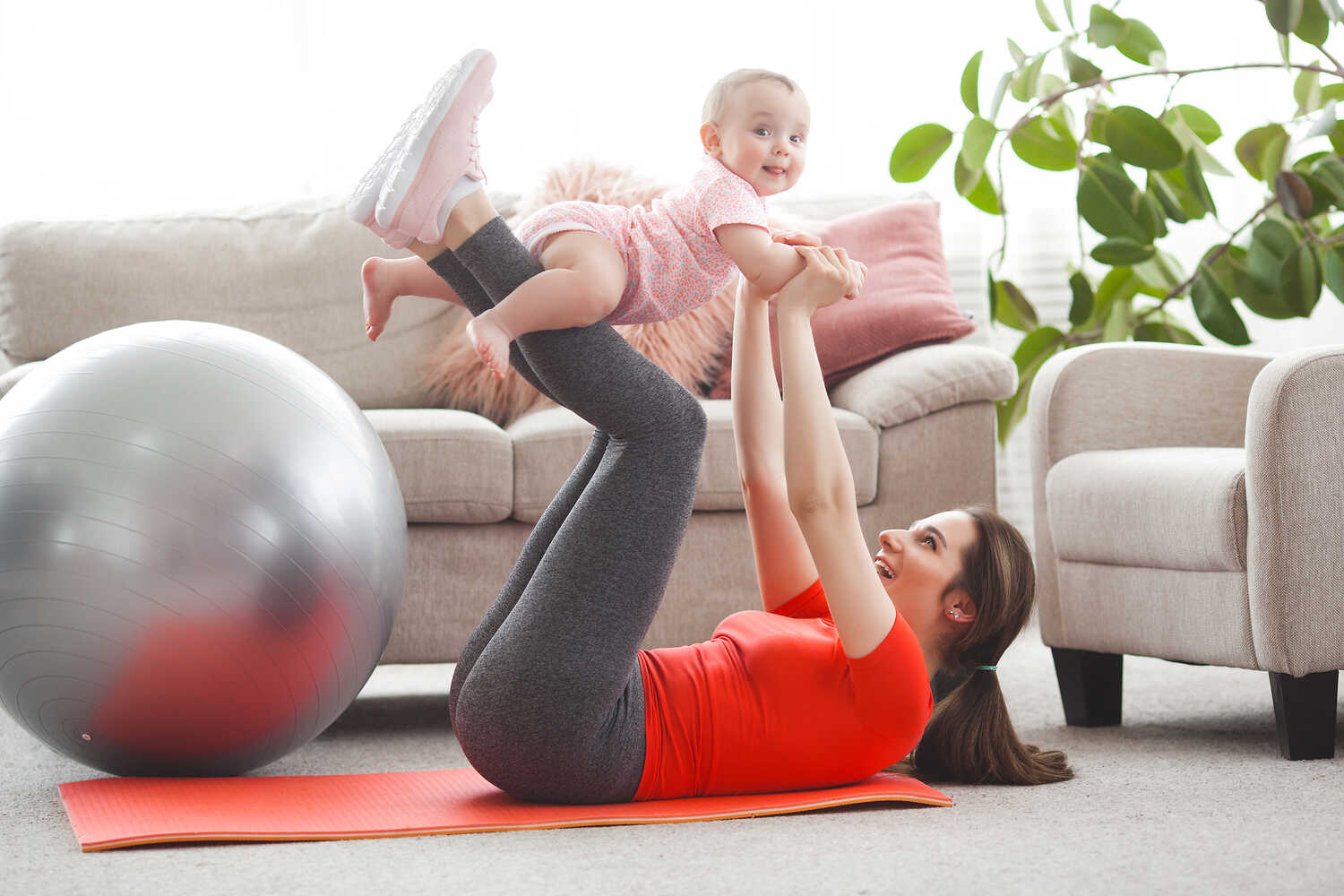
Postnatal yoga can benefit new mothers in many ways. Yoga after delivery is beneficial in the following ways.
- Helps to strengthen your core and lower back, to prevent back pain (2)
- Improves spinal flexibility and posture, which long hours of breastfeeding and holding the baby can put a strain on.
- Tones the abdominal muscles and improves diastasis recti (3)
- Improves your sense of well-being and builds strength in the body
- Boosts your energy levels; taking care of a baby is exhausting work and you may not be getting enough sleep.
- Improves your mental well-being, and helps to alleviate mood swings, postpartum depression, anxiety, feelings of loneliness, and isolation. With regular practice of yoga, you will find yourself handling stress better (4).
- Some women may experience incontinence; reduced bladder control often leads to leakage while sneezing or coughing. Yoga helps to tone up the pelvic floor muscles once again (5).
Are There Any Disadvantages to Joining Postnatal Yoga Classes?
Postnatal yoga is meant to enhance your body’s recovery post-delivery. Overall, yoga is safe; however, overdoing it may impose certain risks.
If it is performed incorrectly or without supervision, it may lead to muscle sprain or strain. Moreover, this could increase the risk of injuries.
Therefore, is important to join reputed classes or train under specialized trainers, physiotherapists, etc. These classes ensure your optimum fitness while minimizing the risk of pain, overstretching, and injury.
How Soon Can Start Yoga After Delivery?
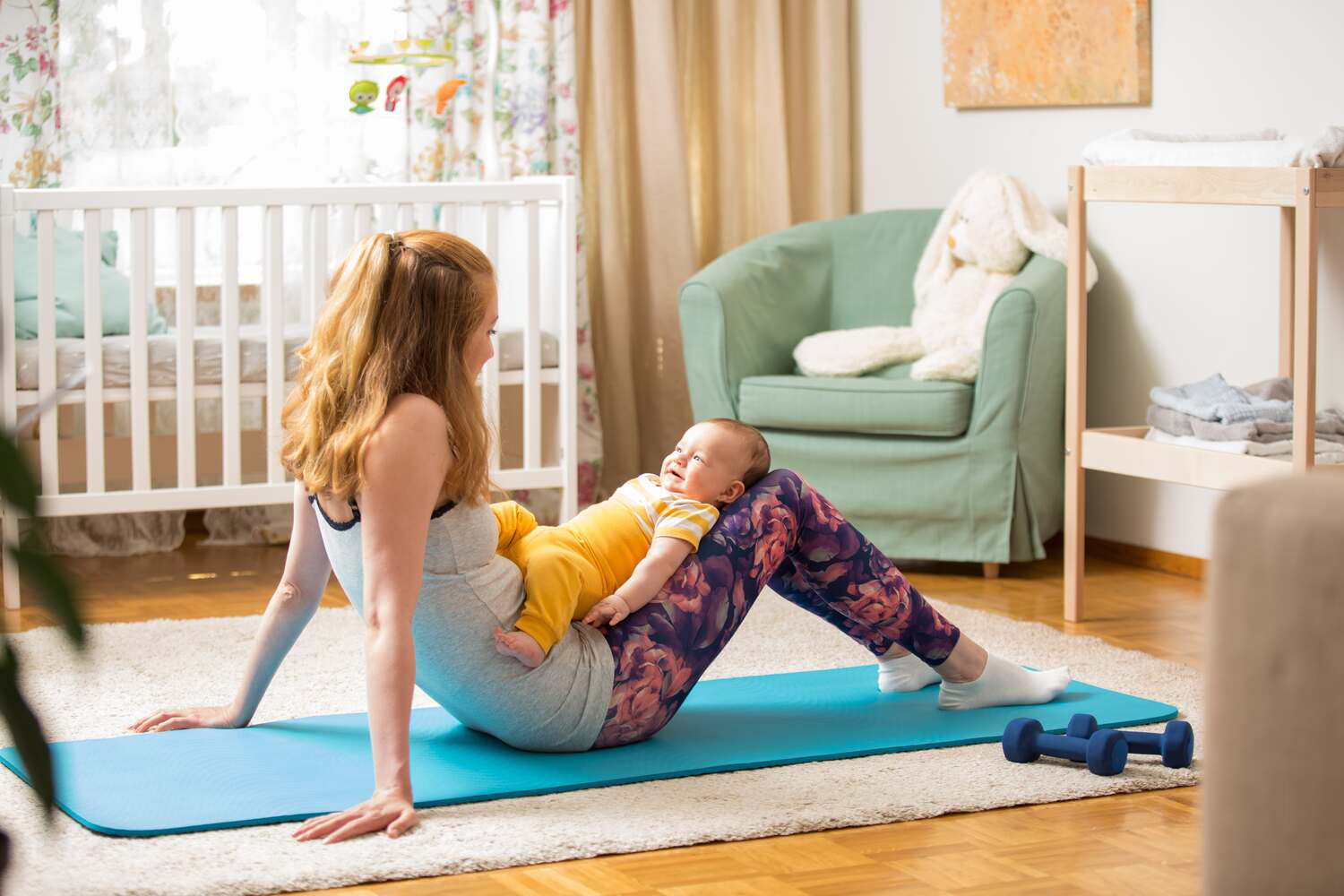
If you have an uncomplicated pregnancy and a natural delivery then three months after delivery is a good time to join or resume a postnatal Yoga class. Postnatal yoga can be most helpful if you start 3 to 9 months after delivery. The best time to get started is the first year after childbirth.
Do listen to how your body feels, and build up your readiness to exercise by walking regularly. Start with short durations twice a day instead of walking too much at one time.
Also consult your doctor about starting to exercise if you had complications during your pregnancy, during delivery, or after childbirth.
In case you are having medical issues like pain in the abdomen or pelvic floor, or continued bleeding even after 6 weeks of delivery, then seek medical intervention for that first before you think of starting postnatal exercises.
To be able to attend a postnatal class consistently, it is helpful to have a few things in place at home. Once you have established a new, somewhat stable routine at home following the initial hiccups, you can plan to attend the classes regularly.
An adequate support system is required at home so that you do your yoga undistracted while another adult cares for the baby.
Set up a dedicated space at home to stretch out your mat so that you will not be disturbed during the duration of your exercise.
Top Postnatal Yoga Poses For New Mothers
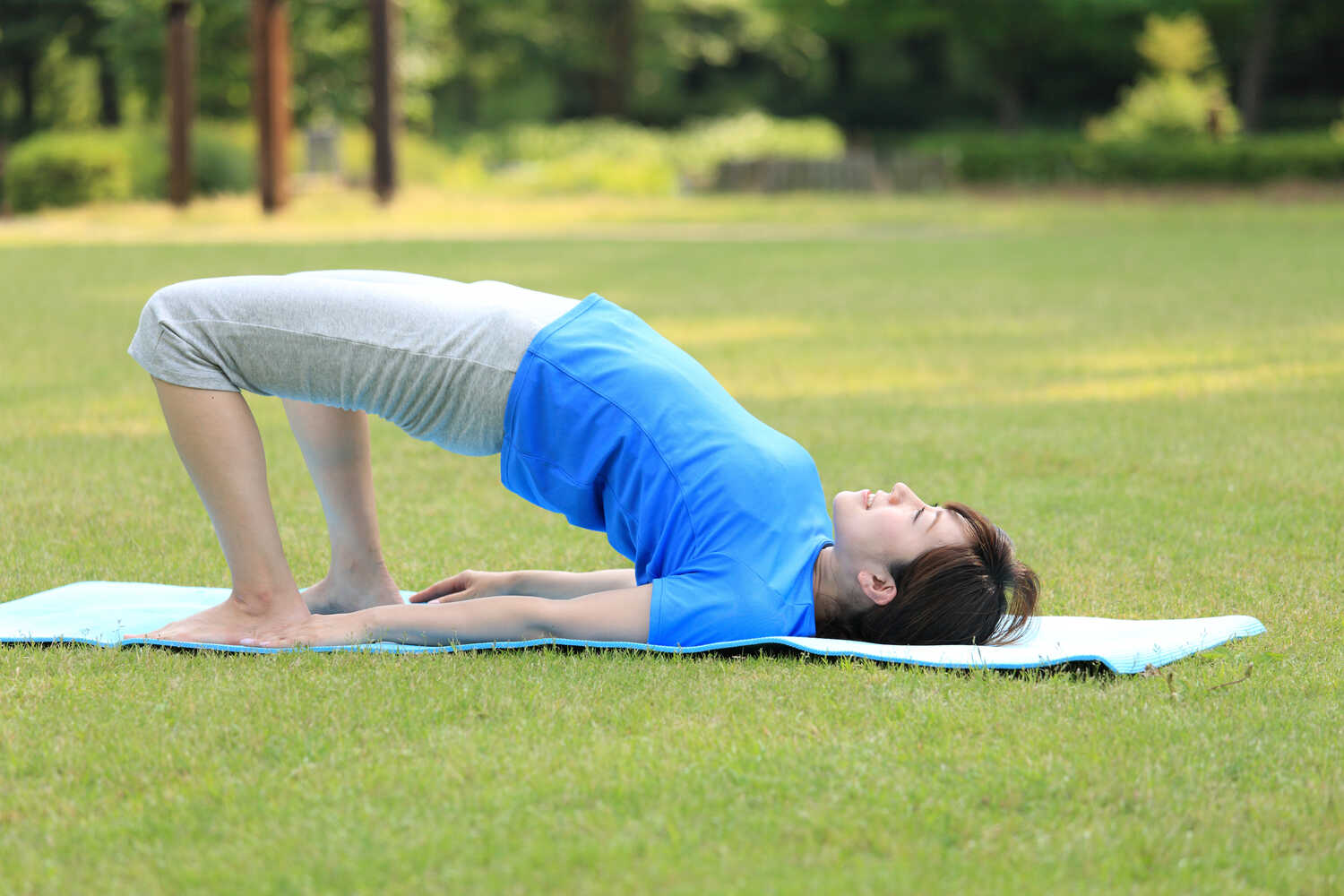
It’s common for a new mother to experience post-partum symptoms such as depression, tight muscles, pain and stiffness, etc. A simple way to combat such symptoms is through yoga. So here are some simple poses that you can do at home.
1. Kegel Exercises
Kegels can strengthen your pelvic floor muscles and help manage conditions like incontinence. These exercises give better control of your bowel and bladder while preventing muscle weakness (6).
2. Bridge Pose
Bridge pose is a fantastic exercise to manage low back pain. It opens thighs and hips while reducing tightness in the muscles. Further, it strengthens trunk muscles for optimum stability.
3. Mountain Pose
Mountain pose or Tadasana focuses on improving your body posture. It aligns your shoulders, hips, knees, feet, and spine to maintain the correct posture.
4. Happy Baby Pose
The happy baby pose helps strengthen your abdominal and back muscles after delivery. It releases tension in the hips and back and increases flexibility and stability.
5. Cat And Cow Pose
The cat and cow pose reduces stress in the lower back region and decreases pain due to postural change during pregnancy. It enhances the flexibility of the spine, shoulders, and neck to improve the range of motion.
Precautions to Take When Joining Postpartum Yoga Classes
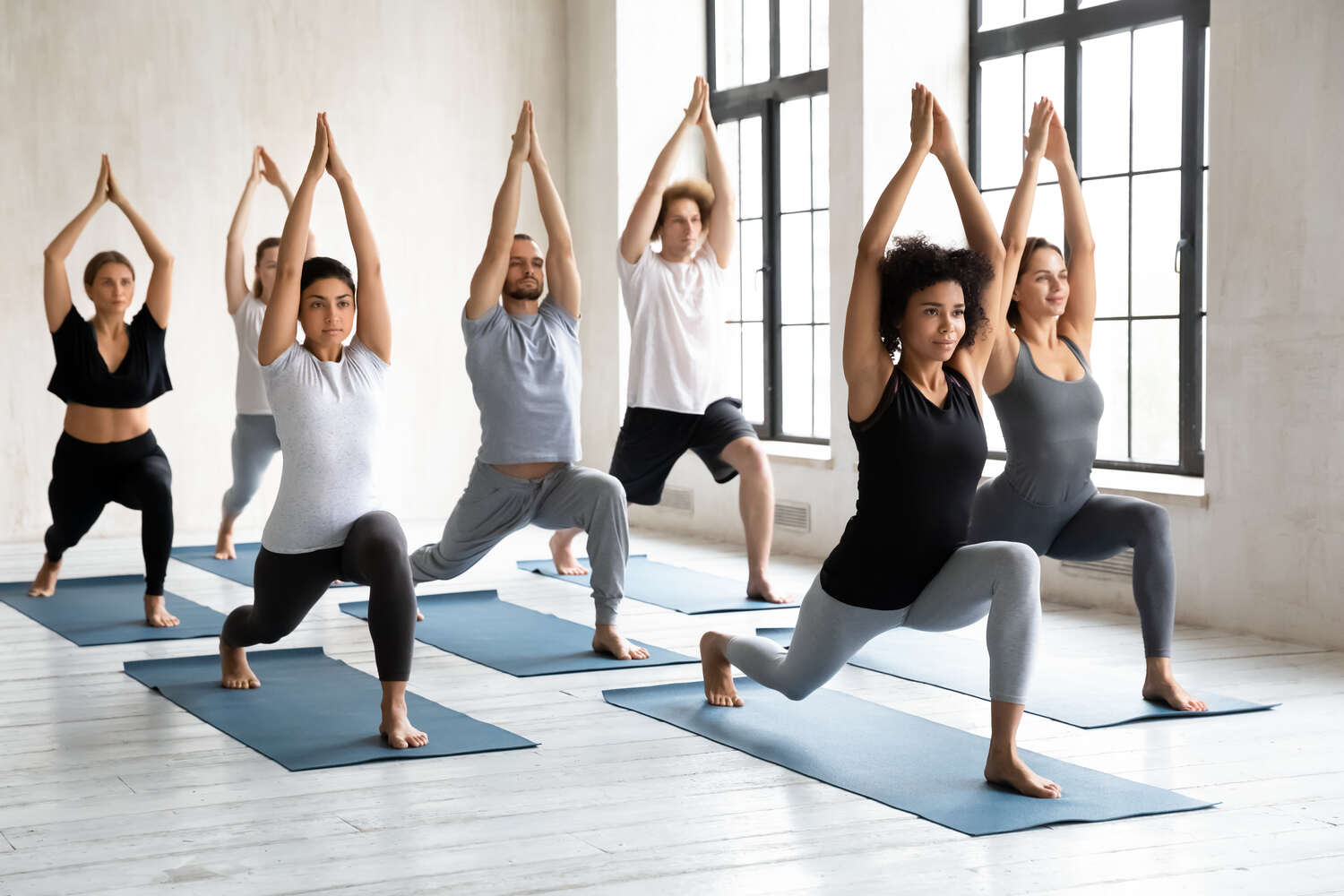
You can consider taking yoga classes after pregnancy based on your condition. Here are a few precautions to take while joining postpartum yoga training sessions.
a. Instructor Qualifications And Experience
It is best to choose an instructor certified in teaching Postnatal yoga, who has experience and a deep understanding of pregnancy, childbirth, and the postpartum stage. The instructor needs to be familiar with the state of a woman’s health, post-delivery, and how to build it up again gradually.
b. Program Duration & Number of Sessions (As Per Convenience)
At least six to eight to eight weeks of classes are required to see some improvement and get into the rhythm of exercising, postpartum. Attending one-hour sessions, held two to three times a week is usually manageable for a new mother.
c. Previous Yoga Experience
It is not required to have learned yoga earlier to attend the Postnatal yoga class. The class will usually be conducted in a way that is suitable for beginners, with detailed explanations and support. However, those who have been fit and active before their pregnancy will find it easier to learn and get into the rhythm of regular exercise.
When to Consult a Doctor For Postpartum Yoga
It’s wise to consult your doctor before joining yoga or starting a postpartum workout routine. Your healthcare provider will help you understand more about yoga exercises and its impact on your body.
Postnatal yoga is an effective form of aftercare which many new mothers are not aware of, that can give your mental and physical health a significant boost. The gentle style of postnatal yoga that an experienced instructor teaches is suited to people of varying fitness levels.
It is advisable for a woman who has delivered to start postnatal yoga classes at some point during the first year after childbirth, taking into account her readiness and medical advice from her doctor.
FAQ’s
1. When Can I Join Yoga Classes After Delivery?
Most women prefer joining yoga classes 6 to 12 weeks after pregnancy. You may indulge in doing yoga once your body fully healed and you don’t feel too much of aches and pains.
2. Which Exercise is Best for Postpartum?
Simple and effective exercises like yoga poses are great to start with a postpartum workout routine. Further, you may combine yoga with low-impact exercises to upgrade your fitness routine.
3. When Can I Start Yoga After Normal Delivery?
The ideal timeline to start a postpartum workout routine could be after 6 weeks in case of normal delivery and no complications. In all cases, you can safely start yoga after one year of childbirth.
4. When Can I Start Yoga After C-section Delivery?
After 10 to 12 weeks, you may slowly start doing yoga exercises if you have a C-section delivery. To be on the safe side, yoga can be resumed about a year after delivery.
5. I Have No Prior Yoga Experience. Can I Start Yoga Classes After Delivery?
Indeed. Whether you are an experienced yoga-doer or a newbie, yoga classes are beneficial for all. These training sessions are easy to comprehend for both beginners and experienced individuals- so anyone can join them.
References
- Physical Activity, Yoga, and Exercise Prescription for Postpartum and Midlife Weight Management: A Practical Review for Clinicians – PMC – [https://www.ncbi.nlm.nih.gov/pmc/articles/PMC9008094/]
- The effect of yoga on the delivery and neonatal outcomes in nulliparous pregnant women in Iran: a clinical trial study – PMC – [https://www.ncbi.nlm.nih.gov/pmc/articles/PMC8091762/]
- Effectiveness of Yoga on the Interrectus Distance in Early Postpartum Women: A High-Frequency Ultrasound Study – [https://www.researchgate.net/publication/360754524_Effectiveness_of_Yoga_on_the_Interrectus_Distance_in_Early_Postpartum_Women_A_High-Frequency_Ultrasound_Study]
- The Effect of Yoga on Stress, Anxiety, and Depression in Women – PMC – [https://www.ncbi.nlm.nih.gov/pmc/articles/PMC5843960/]
- Yoga and Pilates compared to pelvic floor muscle training for urinary incontinence in elderly women: A randomised controlled pilot trial – ScienceDirect – [https://www.sciencedirect.com/science/article/abs/pii/S1744388121002012]
- Kegel Exercises – StatPearls – NCBI Bookshelf – [https://www.ncbi.nlm.nih.gov/books/NBK555898/]

